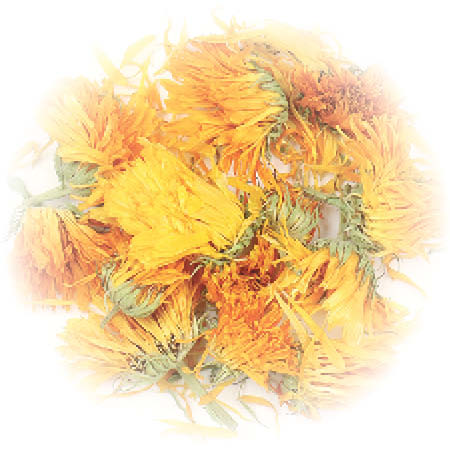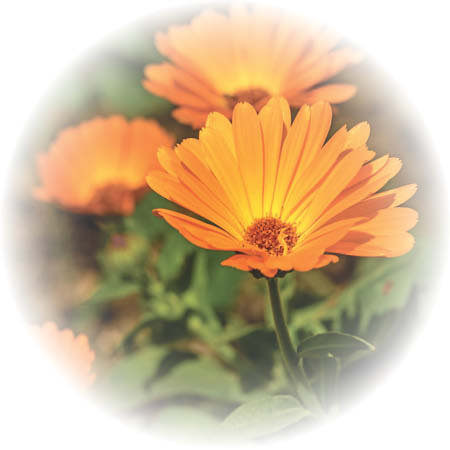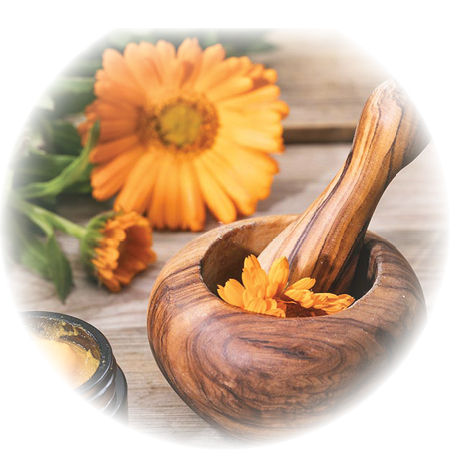Calendula Flowers (Calendula officinalis) – Dried Herb, Organic
$17.58 – $175.80
Calendula, also known as Mary-Bud, Marygold, Pot Marigold and Poor Man’s Saffron, is one of the oldest of all cultivated flowers. The plant was described in the 3rd Century, BC and was an important part of the gardens of 5th Century France. Calendula is a genus of about 15–20 species of annual and perennial herbaceous plants in the daisy family Asteraceae that are often known as marigolds.
This species is native to southwestern Asia, western Europe, Macaronesia and the Mediterranean. In medieval Europe, Calendula was used to colour and spice various foods, and also as a dye to tint hair and to make butter look more yellow.
Calendula was believed to be first cultivated by St. Hildegard of Bingen, an herbalist and nun practicing herbalism in the 11th century. Nicholas Culpepper, a 17th-century botanist, herbalist and astrologist, mentioned using Calendula juice mixed with vinegar as a rinse for the skin and scalp; and that a tea of the flowers comforts the heart. Astrologically associated with the sun and the fire element, Calendula was believed to imbue magical powers of protection and clairvoyance, and even to assist in legal matters. Flowers strung above doorposts were said to keep evil out and to protect one while sleeping if put under the bed. It was said that picking the flowers under the noonday sun will strengthen and comfort the heart.
Folk medicine healers in Europe prepared infusions, extracts and ointments with the petals to induce menstrual flow, to produce sweat during fevers and to cure jaundice. In 19th century America, the Eclectic physicians used Calendula internally to treat liver problems, stomach ulcers, conjunctivitis (inflammation of the mucous membrane that lines the eyelids, commonly called pink eye), and externally for superficial burns, bruises and wounds. This herb was used in ancient times in Ayurvedic medicine, Traditional Chinese Medicine (TCM) and North American indigenous cultures to combat the occasional upset stomach.
Properties:
The energetics and taste of Calendula are bitter, pungent slightly sweet and salty taste with a drying, cooling and warming effect on the tissues. The bitterness of Calendula makes it cooling and its resinous and pungency make the plant slightly warming.
Calendula has an affinity towards the liver, heart, lungs, lymphatic system, kidneys, bladder, digestive system, immune system, muscles and cardiovascular system. For digestive issues combine Calendula with Marshmallow, Slippery Elm or Meadowsweet. For support of the bladder combine Calendula with Corn Silk, Hydrangea or Dandelion Leaf. For the lymphatic system mix with Cleaver, Red Clover or Chickweed.
How to use:
1 teaspoon of Calendula Flowers to one cup of boiling water. Steep for 15 minutes, strain and drink up to three cups a day.
For an infused oil put Calendula Flowers in a jar and submerge with oil. Agitate daily and let sit for four to six weeks or put Calendula in a crockpot, cover with oil and put on warm for 8 hours or longer.
Cautions & contraindications:
Persons with allergies to other members of the Asteraceae family (such as Feverfew, Chamomile or Echinacea species) should exercise caution with Calendula, as allergic cross-reactivity to Asteraceae plants is common.
This information is for educational purposes only and is not intended to diagnose, treat or cure any disease or illness. Please consult your healthcare provider prior to the use of this product if you are pregnant, nursing, taking medications or have a medical condition. Individual results may vary.




Reviews
There are no reviews yet.